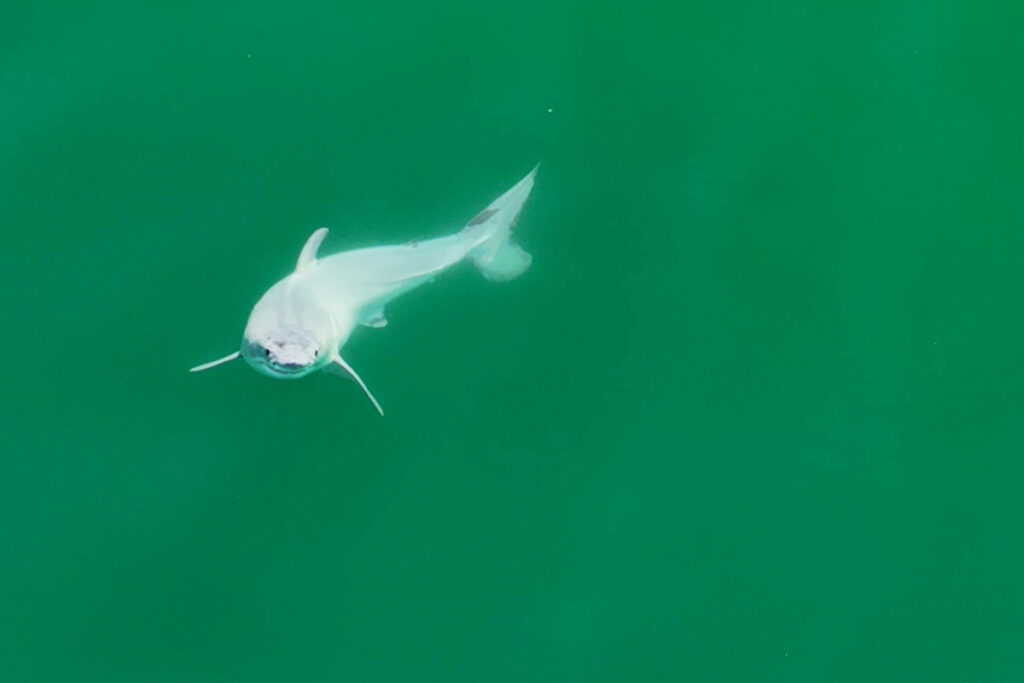Gaona and Stearns had previously observed great white sharks in the area, possibly pregnant, diving for long periods of time. They noticed that the small shark was excreting a white substance from its skin as it swam, and thus realized that the shark was probably a pup that had been born nearby and was still shedding its fetal membranes. Such a scene had never been seen before.
Scientists who have seen the footage believe the small size and rounded fins indicate that the baby shark was just born and was probably only a few hours old. Stearns says this color may be a symptom of a skin disease. But the authors of the new study say this ghostly coating is the remnants of a white substance called “cerebral fluid” produced by pregnant mother sharks to feed their babies as they grow.
The shark was probably a baby and shedding fetal membranes
Gaona hopes that the sighting of this rare baby will provide more information about the life cycle of great white sharks. It is generally believed that these sharks give birth in deeper waters, but the sighting of this baby on the beach challenges popular notions. Gaona says:
Most of the scientific community believed that filming a newborn near the beach was unlikely, and I didn’t expect to find anything. But as I always say, if you don’t look, you’ll never find anything. This film is a piece of the puzzle and has the potential to change the direction of our search. Recording the actual moment of birth is like the “holy grail” of shark science. What I filmed is just a clue that brings us closer to how we were born. Due to the limitations of filming underwater and the unpredictability of this event, capturing the actual moment of birth is very important.
Charles Underwood The University of London also says that previously only three or four great white sharks under one year of age had been seen in the wild. Their number is so small that researchers know them all by their own special name. Information about this species is curiously limited. The deeper the creature sinks, the less information we have.
Gauna and Stearns say one sighting isn’t enough to end the mystery, and more studies are needed to determine whether it’s common to see babies of this species on beaches. If coastal waters are found to be important to the life cycle of great white sharks, policymakers should take steps to protect these areas and ensure the safety of the great white shark species, which is listed as “vulnerable” by the International Union for Conservation of Nature. .



